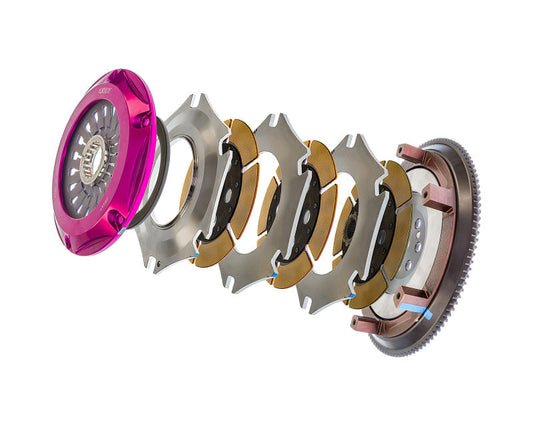Maintaining proper tire pressure is crucial for safety, performance, and fuel efficiency. A Tire Pressure Monitoring System (TPMS) ensures that your tires are always at the optimal pressure, reducing the risk of blowouts, improving handling, and extending tire life. Whether you're driving a daily commuter or a high-performance vehicle, having a TPMS is essential for maximizing safety and efficiency. At WOT Performance Parts, we offer top-tier TPMS solutions at great prices to keep your ride in peak condition. Contact WOT Performance Parts for more information.
What Is A Tire Pressure Monitoring System (TPMS)?
A Tire Pressure Monitoring System is a safety feature that continuously monitors tire pressure and alerts the driver if one or more tires are underinflated. TPMS can be factory-installed in newer vehicles or added as an aftermarket upgrade for older models.
There are two main types of TPMS:
-
Direct TPMS: Uses sensors inside each tire to provide real-time pressure readings.
-
Indirect TPMS: Monitors wheel speed and other vehicle data to estimate tire pressure changes.
Both systems help drivers maintain proper tire inflation and avoid potential safety hazards.
Why Tire Pressure Monitoring Systems Are Important
1. Enhanced Safety
Underinflated tires can lead to dangerous driving conditions, including:
-
Increased risk of blowouts and tire failure.
-
Reduced traction and control, especially in wet or icy conditions.
-
Longer braking distances put you at risk during emergency stops.
A TPMS warns you before tire pressure reaches a critical level, helping you prevent accidents and maintain stability on the road.
2. Improved Fuel Efficiency
Tires that are underinflated create more rolling resistance, causing your engine to work harder and burn more fuel. According to the U.S. Department of Energy, properly inflated tires can improve fuel economy by up to 3%.
By using a Tire Pressure Monitoring System, you can ensure optimal tire pressure, reducing fuel consumption and saving money at the pump.
3. Longer Tire Lifespan
Uneven or improper tire pressure leads to uneven tread wear, reducing the lifespan of your tires. Over time, this can result in:
-
Premature tire replacement.
-
Poor vehicle alignment.
-
Increased maintenance costs.
A TPMS helps extend the life of your tires by ensuring they remain at the correct pressure, saving you from costly replacements.
4. Better Handling And Performance
Properly inflated tires provide:
-
Optimal grip and traction, improving acceleration and braking.
-
Even weight distribution enhances stability during turns.
-
Smoother ride quality, reducing road vibrations and discomfort.
Whether you're driving on the highway, city streets, or track, a Tire Pressure Monitoring System keeps your vehicle performing at its best.
5. Compliance With Safety Regulations
In many countries, including the U.S., TPMS is required in all vehicles manufactured after 2007. If you drive an older car, installing an aftermarket TPMS can help you meet safety standards and ensure compliance with local regulations.
How To Maintain And Use A TPMS Effectively
To get the most out of your Tire Pressure Monitoring System, follow these tips:
-
Regularly Check Sensors: TPMS sensors have batteries that may need replacement over time.
-
Manually Check Tire Pressure: While TPMS provides alerts, it’s still a good idea to verify pressure with a gauge.
-
Replace Faulty Sensors Promptly: If your TPMS warning light stays on despite proper inflation, it may indicate a malfunctioning sensor.
Upgrade Your Ride With A TPMS From WOT Performance Parts
At WOT Performance Parts, we offer high-quality Tire Pressure Monitoring Systems designed for reliability and precision. Whether you need a replacement sensor or a full TPMS upgrade, we have the best products to keep your vehicle safe and performing at its peak. Shop with us today and drive with confidence!






